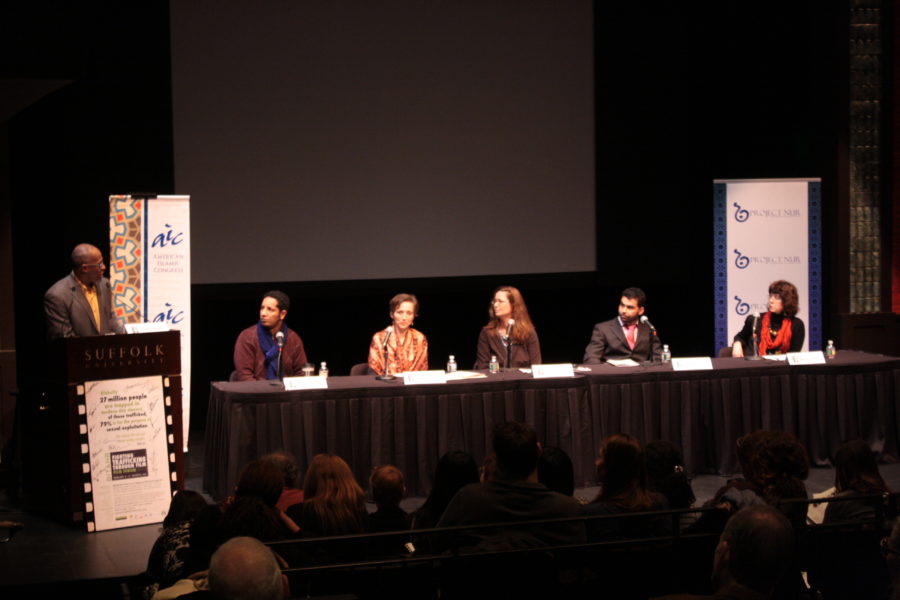Chelsea Szmania
Journal Staff
Lining the white walls of the Massachusetts College of Art and Design’s Stephen D. Paine Gallery are 150 posters, each displaying a powerful image or statement. The message of AIDS awareness is brought forth, loud and clear.
Running until December, Graphic Intervention: 25 Years of International AIDS Awareness Posters 1985-2010 shows over 100 international posters from 44 countries that relay 25 years of AIDS awareness. Each showcases compelling graphics and words displaying the overall theme of AIDS and the seriousness of the immune deficiency disease. Elizabeth Resnick, one of the curators behind the exhibit (as well as a professor and chair of the Graphic Design department at Mass Art) knows the heavy weight of importance AIDS holds worldwide.
“We are in a global society. The work we do here influences and impacts everywhere around the world,” said Resnick. The choice to display posters from not only the United States, but other countries as well, shows just how deeply AIDS affects everyone.
After four exhibitions, one of which was called The Graphic Imperative: International Posters for Peace, Justice, and the Environment: 1965-2005, Resnick knew she wanted to stay in the sociopolitical realm for her next exhibit. Working with Javier Cortes, the creative director at Korn Design in Boston (and partner for Graphic Intervention), they decided to choose a large portion of their posters from an archive belonging to James Lapides’, the owner of the International Poster Gallery on Newbury Street. Once their collection was found, they had posters that ultimately showed the evolution of AIDS. There are posters with the earlier message of what AIDS is and how it’s contracted, as well as posters that show how to prevent it, and lastly the discrimination against the disease that still exists. Each poster has a different approach to AIDS, but ultimately the idea behind it remains the same: the message is directed at the public as a whole.
“The point of view of the exhibition is to show the magnitude of the variety of visual strategies that are used around the world,” said Resnick.
Since AIDS first entered the public consciousness in the 1980s, people have become more knowledgeable, but people are still ignorant when it comes to the subject, which is why Graphic Intervention is such an important exhibit. Many are still having unprotected sex, especially within younger age groups. They aren’t always aware of the severe consequences that could occur. Every nine-and-a-half minutes someone in the U.S. receives AIDS, according to www.nineandahalfminutes.org.
“It’s the type of subject matter that a lot of different people can connect to,” said Resnick. It’s an unnerving realization, which makes the exhibition very relatable to many who are either living with the disease or know someone that has died from it. AIDS is an extremely powerful topic that still has a great effect on many people. Graphic Intervention: 25 Years of International AIDS Awareness Posters 1985-2010 not only reaches out to the public, but also raises the kind of awareness needed to prevent AIDS around the world.














